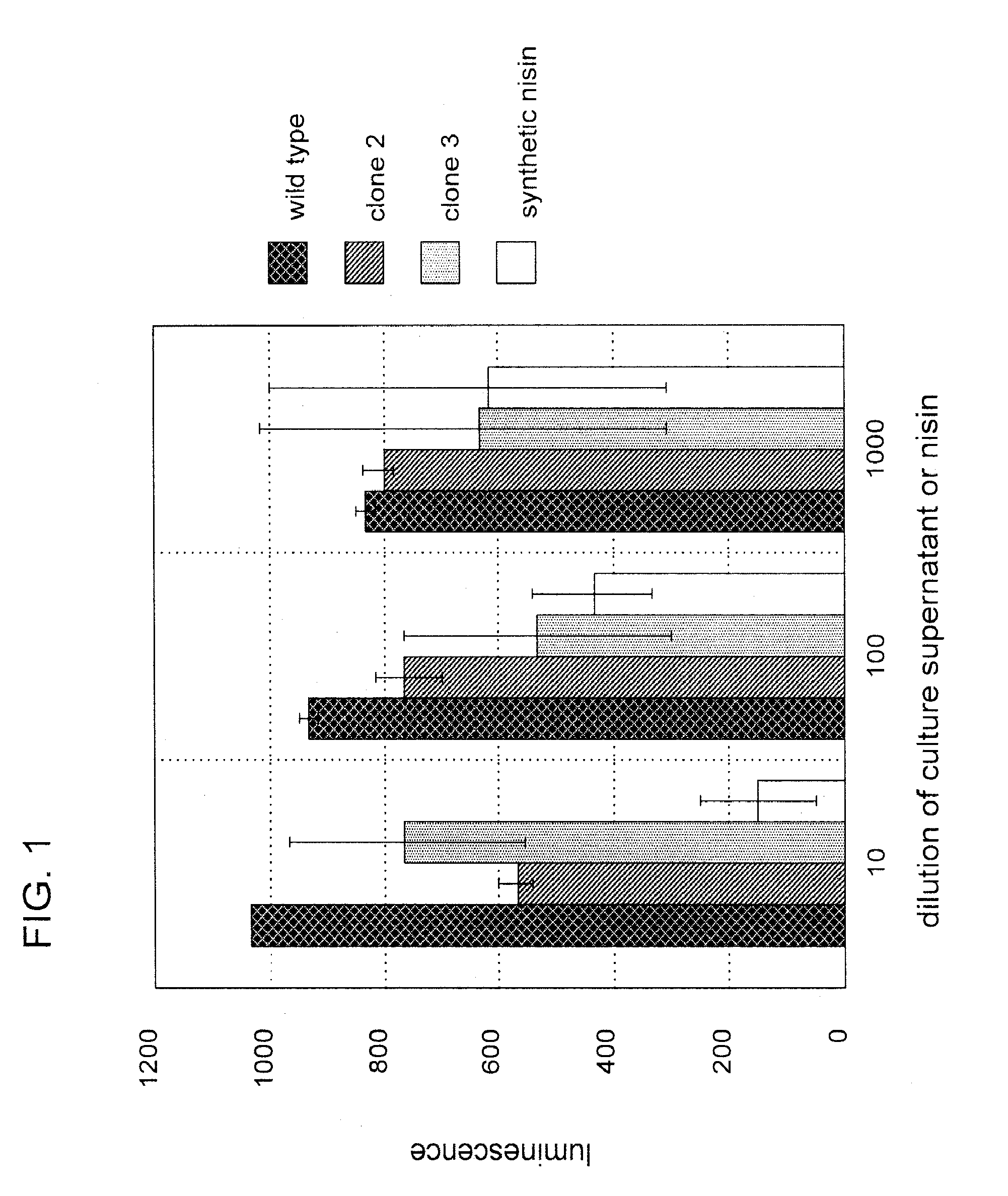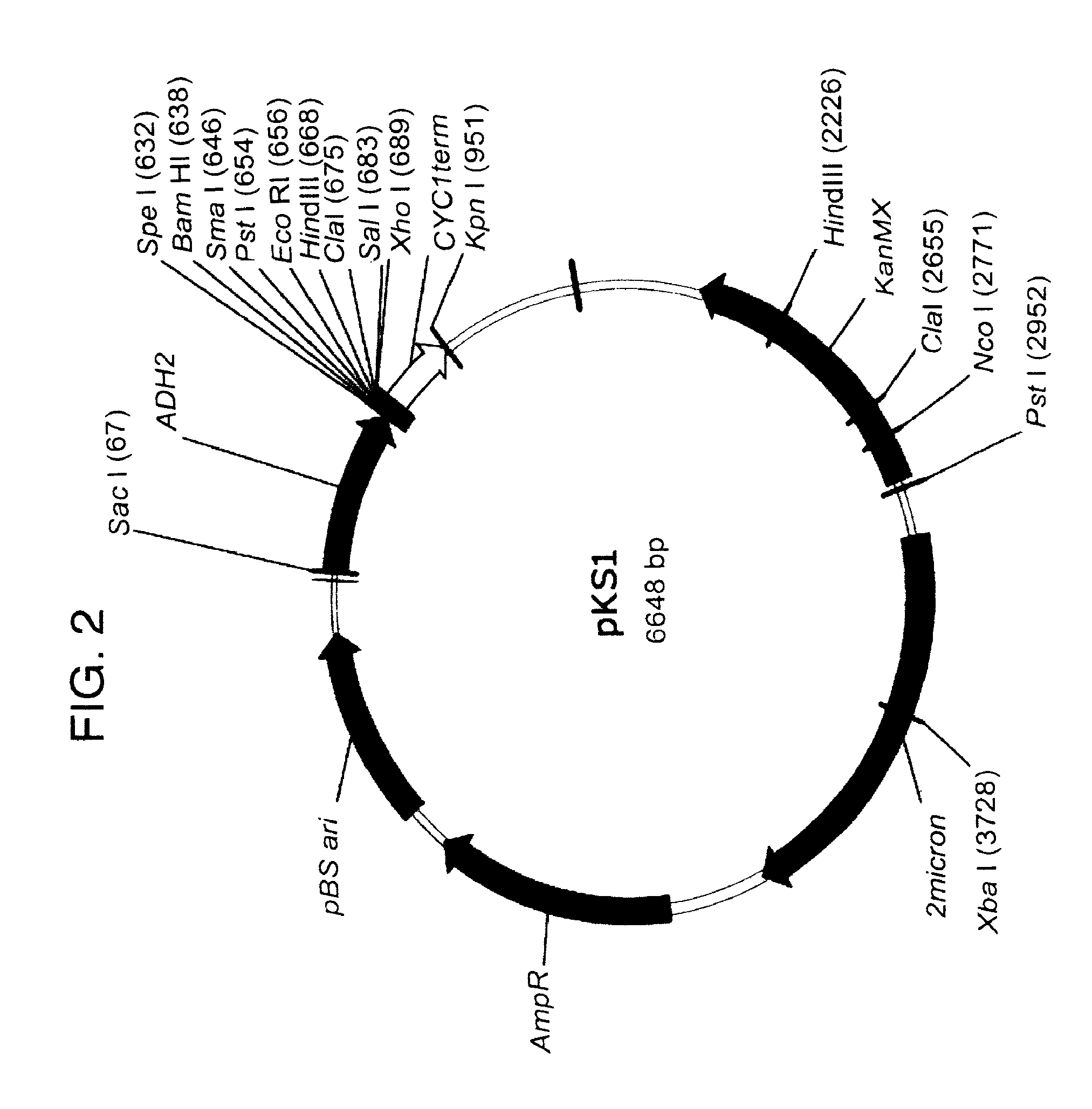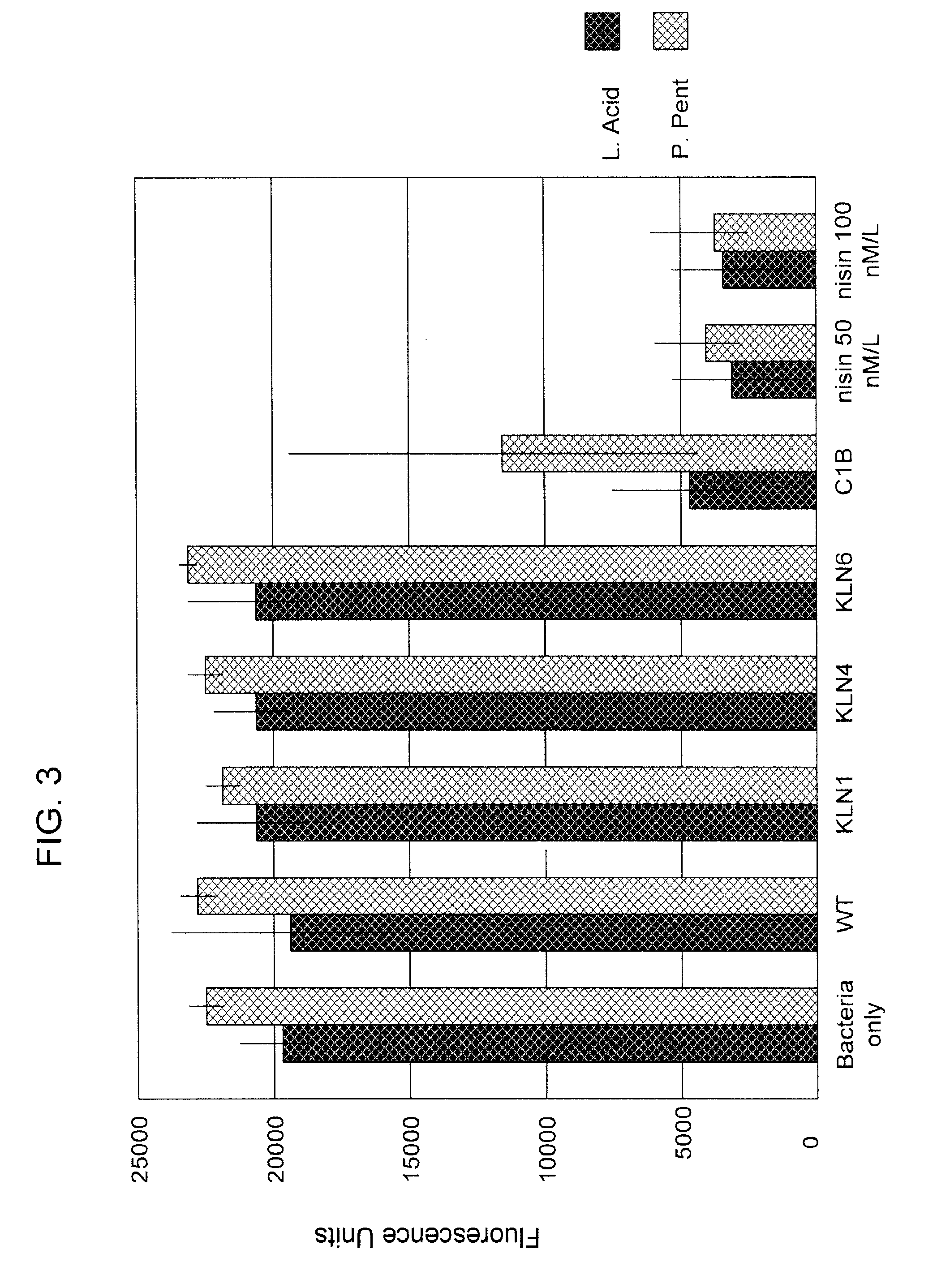Bacteriocin based methods to control lactic acid bacterial growth
a technology of lactic acid bacterial growth and bacteriocin, which is applied in the field of antibacterial proteins and nucleic acid sequences, can solve the problems of environmental sensitive expression of antibacterial proteins, and achieve the effect of reducing or eliminating bacterial contamination
- Summary
- Abstract
- Description
- Claims
- Application Information
AI Technical Summary
Benefits of technology
Problems solved by technology
Method used
Image
Examples
example 1
[0100]Nisin is an antibacterial bacteriocin substance that is secreted by some strains of Lactococcus lactis (L. lactis) bacteria. Nisin A (or nisin Z, which differs by a single amino acid from nisin A) is synthesized as a precursor peptide but then undergoes extensive, covalent, enzymatic modification to become an antibiotic molecule. The antibiotic final form of nisin is secreted by L. lactis to kill competing lactic acid bacteria in their local environment. Nisin is a commercial product used widely in the food and beverage industries. It has Generally Regarded As Safe (GRAS) status under US FDA regulations.
[0101]To demonstrate proof of principle for the use of bacteriocins secreted by genetically engineered yeast in protecting against bacterial contamination, the nisin A gene was cloned into the genome of the yeast Kluyveromyces lactis. Because yeast do not have the enzymes necessary to convert nisin peptide into the antibiotic chemical form, it was not ant...
example 2
General Cloning and Expression of AP Proteins
[0103]The antibacterial proteins of the invention were cloned into a yeast expression system and analyzed for antibacterial activity. The commercial yeast expression system (New England Biolabs) for Kluyveromyces lactis with the pKLAC1 shuttle vector was used. An AP to be expressed was cloned into the multiple cloning site of the pKLAC1 plasmid at the XhoI and BGLII restriction sites. The AP codons were placed in frame with both the KEX protease recognition site (amino acids lysine-arginine) and the preceding alpha mating factor secretion peptide so that the yeast would correctly process and secrete the AP. After cloning the AP gene into pKLAC1 in frame, the plasmid was amplified in E. coli host cells using ampicillin selection. Extracted plasmid was then linearized with the restriction enzyme SacII, which exposed the DNA sequence homologous with the K. lactis LAC4 at both the 5 prime and 3 prime termini of the vector. Specifically, 2 μg ...
example 3
Antibacterial Activity in AP Secreting Yeast
[0106]Antibacterial activity in yeast culture supernatants was tested against 3 target strains of lactic acid bacteria including Enterococcu faecalis 32, Lactobacillus acidophilus (ATCC), and Pediococcus pentosaceus. The method was a modification of the protocol described in Berjeaud et al. Appl Microbiol. Biotechol. 57:757-763, 2001. Each species was transformed with pLSYC02, a plasmid carrying the luxA::B fusion protein controlled by the lactococcal p59 promoter and an erythromycin resistance gene. The luxA:B fusion protein causes luminescent light emission when living bacteria are exposed to nonaldehyde. Killed bacteria do not emit light. Bacteria were grown in phosphate buffered (pH7) Terrific Broth with glycerol containing 150 μg / mL erythromycin (TBG). Single colonies from agar plates were used to seed overnight cultures, which were incubated at 37° C. with shaking. The next day, the cultures were diluted 1:5 in TBG, grown for one hou...
PUM
| Property | Measurement | Unit |
|---|---|---|
| Tm | aaaaa | aaaaa |
| temperature | aaaaa | aaaaa |
| temperature | aaaaa | aaaaa |
Abstract
Description
Claims
Application Information
 Login to View More
Login to View More - R&D
- Intellectual Property
- Life Sciences
- Materials
- Tech Scout
- Unparalleled Data Quality
- Higher Quality Content
- 60% Fewer Hallucinations
Browse by: Latest US Patents, China's latest patents, Technical Efficacy Thesaurus, Application Domain, Technology Topic, Popular Technical Reports.
© 2025 PatSnap. All rights reserved.Legal|Privacy policy|Modern Slavery Act Transparency Statement|Sitemap|About US| Contact US: help@patsnap.com



